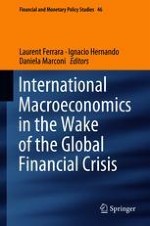2018 | OriginalPaper | Buchkapitel
International Financial Flows in the New Normal: Key Patterns (and Why We Should Care)
verfasst von : Matthieu Bussière, Julia Schmidt, Natacha Valla
Erschienen in: International Macroeconomics in the Wake of the Global Financial Crisis
Aktivieren Sie unsere intelligente Suche, um passende Fachinhalte oder Patente zu finden.
Wählen Sie Textabschnitte aus um mit Künstlicher Intelligenz passenden Patente zu finden. powered by
Markieren Sie Textabschnitte, um KI-gestützt weitere passende Inhalte zu finden. powered by
